Functional rehabilitation
As practitioners we are continually dealing with dysfunctional musculoskeletal systems. Typically dysfunction develops and is perpetuated... Read Article
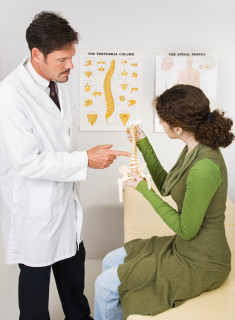
There is a lot of confusing and misleading information about what subluxation (complexes) are. This is because:
In this article we’ll go over what subluxations actually are, what they do, and as a bonus how they are best corrected.
Summary
Part one: the underlying dysfunction
Part two: the problems these cause
Part three: how subluxations are corrected
Professionals
References
The medical definition of a subluxation is very clear. Simply, it is a partial or incomplete dislocation.
Chiropractors sometimes describe subluxations as vertebrae being "misaligned" or "bones out of place", but this is incorrect and misleading. The vertebrae (or individual joints) are merely functioning abnormally, with the technical term being a dysfunction.
These dysfunctions cause a host of secondary effects such as muscle spasm, inflammation, nerve interference and joint degeneration (arthritis). Chiropractors have coined the term “subluxation complex” to describe the underlying dysfunction plus those secondary effects. However, “complex” is often omitted, simply referring to the complete condition as a “subluxation”.
Perhaps the easiest way to show you what the dysfunction is is by using some very easy to understand diagrams.
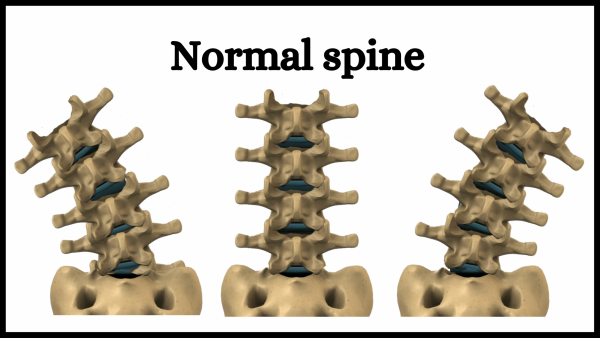
This diagram shows how the vertebrae normally sit and move. We see that when standing straight all the vertebrae should sit in the neutral position, and when the spine bends they should all move about the same amount.
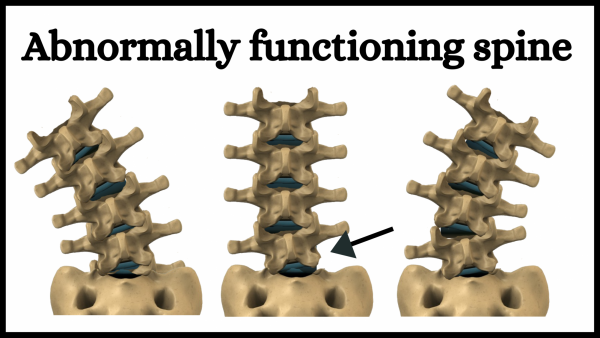
This picture shows a typical example of spinal dysfunction. In this example the bottom vertebrae should be able to move freely from side to side, but instead is stiffened and tilted to the left.
When the spine is bending to the left the vertebrae is perfectly aligned and in position. However, because the joint is unable to move freely it does not return to neutral when standing straight, so there is an unusual “kink” at the bottom. Worse still, when the spine bends to the right the lower vertebrae stays tilted to the left creating quite abnormal stress on the ones above (1).
As stated, the fundamental cause of dysfunction is individual spinal joints stiffening. Causes of this include:
There are two main issues with describing vertebrae as being misaligned or our of place.
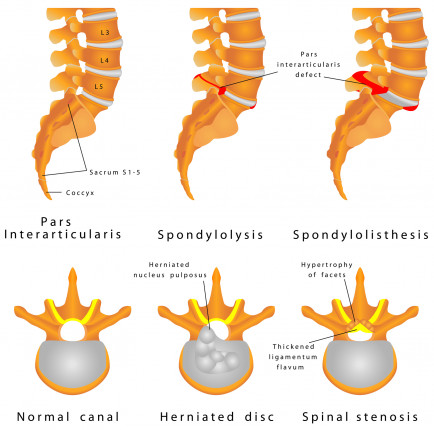
Apart from following severe trauma, actual misaligned vertebrae are extremely rare. The most common example is called a spondylolisthesis (as pictured). This is usually develops slowly over a long period of time, and cannot be put “back in place”.
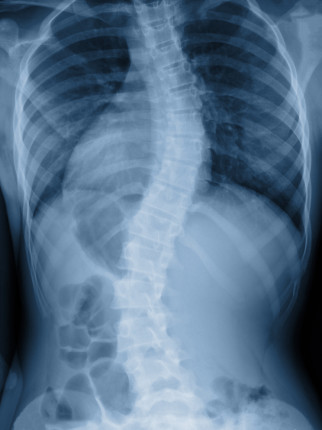
A scoliosis is a sideways bend in the spine. A lot of conditions described as scoliosis are relatively minor bends such the “kink” caused in the dysfunction example above. However, there are rare conditions such as shown in this x-ray where a spine will develop a far more severe scoliosis.
The implications for treatment and follow up care are completely different to what is actually required.
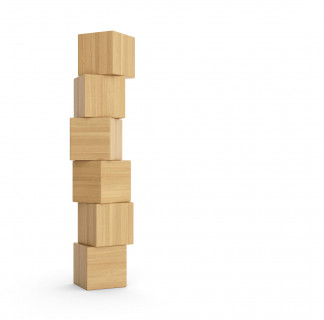
If you think of the issue as a misaligned vertebrae or a bone out of place it is natural to assume that you need to avoid movements that may “pop it out again”. The reality is that the joint has stiffened so some movement is often good to help keep it moving.
If you think that your vertebrae was “out” the logical conclusion is that it is put back “in” again, and you and leave it until it slips “out” again. The reality is that the treatment would have partially restored movement to a stiffened joint, and further treatments may help further restore the movement.
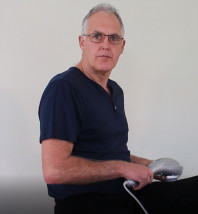
Now you know what really happens to your spine I’ll share with you the problems these dysfunctions cause and how they should be treated.
Now you’ve seen what the dysfunctions are, let's look at what they do do to your spine.
subluxation= the dysfunction
subluxation complex= the dysfunction plus these effects
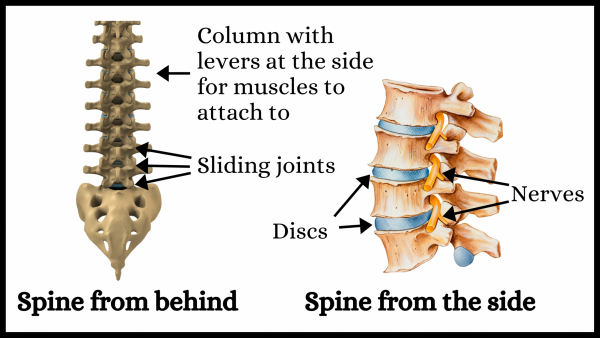
I’ll be mentioning various parts that can be affected so first a quick introduction to the anatomy of your spine. Very simply, we see there’s a column of bones called vertebrae, and between each we have discs. At the back we have little sliding joints to help guide the movement. At the side we have holes that nerves come out, and finally you’ve got levers poking out that muscles attach to to move your spine around.
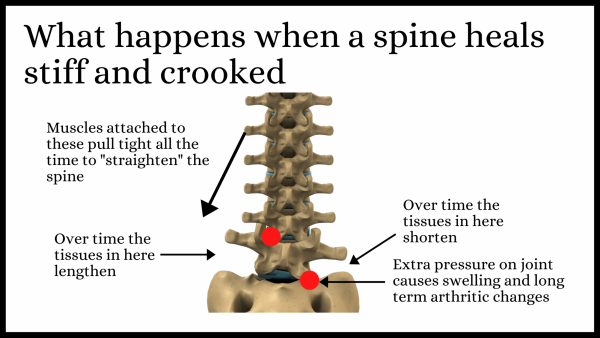
This diagram shows a common dysfunction and the basic issues it causes. In this example the bottom joint has been repeatedly strained, and is now stiffened and tilting to the right.
We can see that with the bottom vertebrae tilted to the right there’s a lot of extra pressure on the small joint below on the right. There is also a similar problem above on the opposite side because that joint is tilted back the other way to straighten the spine. These joints were never designed to take constant pressure, so this causes (2,3):
Over time these joints usually become irritated, inflamed or injured. When this happens you will start getting pain in your spine, which may become sharp and pinching when you move around. These issues are too often just treated with rest, anti-inflammatory drugs and maybe injections. These give temporary relief, but of course do absolutely nothing to relieve the abnormal pressure. Further pain and long term deterioration of your spine are usually inevitable.
With the bottom vertebrae tilted the spine above will tend to lean to the right. So you do not overbalance the muscles on the opposite side will automatically tighten to straighten and balance your spine.
With the muscles constantly tight they will eventually become painful. Massage and/or stretching exercises are commonly used to relieve them. This will give temporary relief, but as long as the bottom vertebrae is tilted your body will automatically re-tighten the muscles on the left hand side.
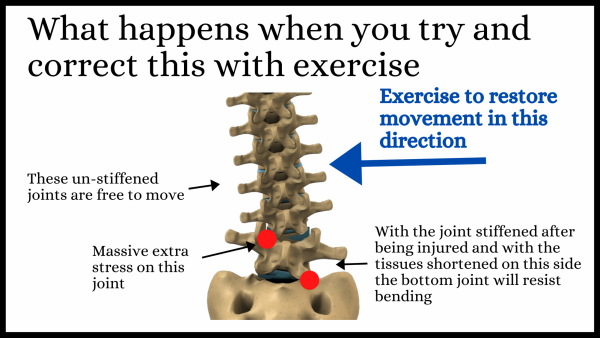
This diagram shows what happens when this spine with the stiffened lower joint tries to bend to the left. The stiffened joint doesn’t move and stays tilted to the right, while the others are forced to do extra to compensate. The joint above the stiffened tilted joint probably ends up bending twice as far as it was designed to do. As you could imagine this is a disaster waiting to happen. That overworked joint is eventually going to be injured, or will deteriorate very quickly.
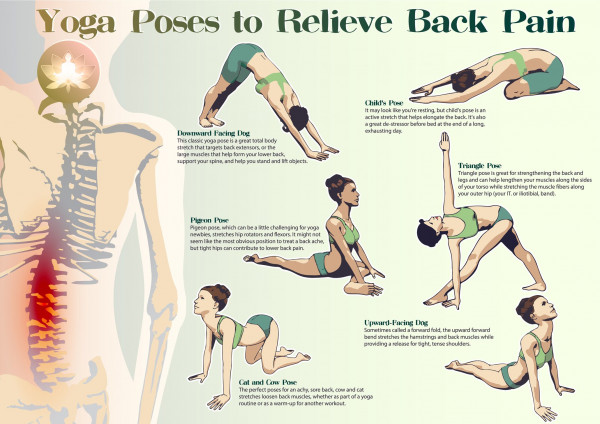
With stiffened joints and tight muscles your movement will be restricted. Exercises will commonly be prescribed to restore movement and relieve pain, oblivious to the underlying cause. These exercises can temporarily stretch the compensating joints a bit more, maybe giving a bit of relief and a bit more flexibility, but I hope you can already see the long term consequences. Those exercises are not going to restore movement to the stiffened joint, and will only further stress the already over stressed compensatory joints. Without correcting the underlying problem, long term these exercises will cause severe joint degeneration and/or catastrophic failure.
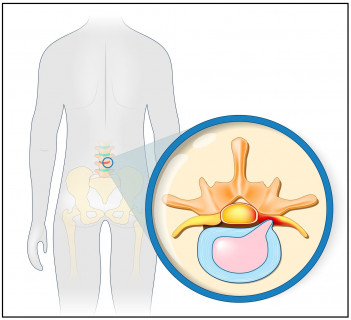
Another common issue with back pain is disc problems. As I’ve shown you discs sit between the vertebrae. Structurally they’re a bit like car tyres only filled with jelly rather than air. That allows them to squash down on one side when you bend.
The main problem with discs is, just like a car's tyres, abnormal stress over time can cause the walls to weaken and the jelly inside starts to push through. That’s what’s happened in this picture. When this does happen it can create several problems.
There are two ways a stiffened tilted joint can cause disc probems.
The first is really obvious. Those compensating joints are forced to bend way more than they were meant to which puts tremendous stress on the fibres in the walls of the discs, so over time they will weaken and fail.
The not so obvious way a stiffened joint can destroy a disc is through a lack of movement. There are no blood vessels inside a disc so it relies on movement to pump through nutrients. If it’s not moving there’s no pumping. With no pumping there’s no nutrients. With no nutrients the inside of the disc dies (3–5).
We’ve mentioned how stiffened spinal joints can cause long term arthritic changes. Lets have a look at an example on an x/ray.
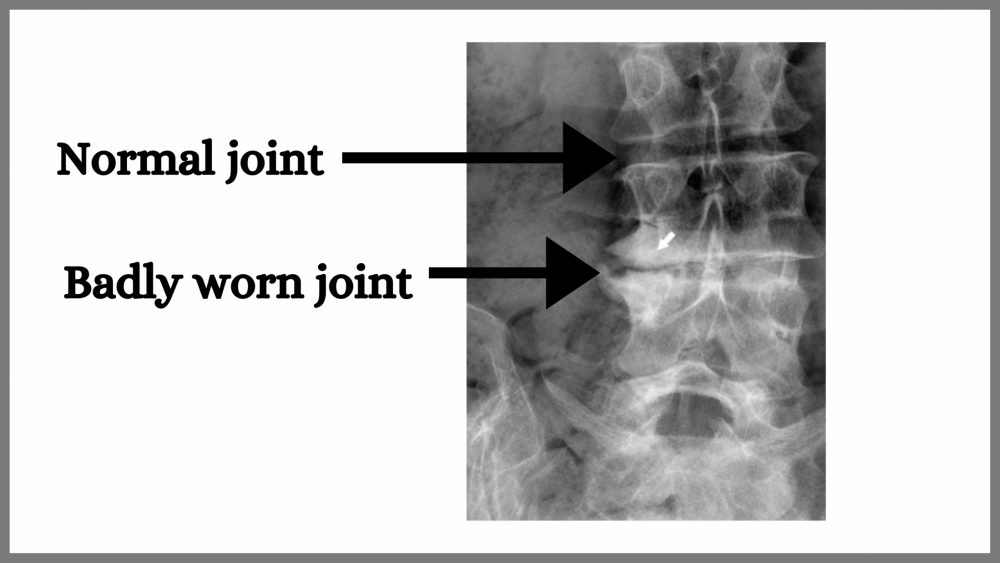
On this x-ray the white rectangles are the vertebrae and the discs are the spaces between them. In the normal joint the space between the vertebrae is about the right thickness and it’s even all the way through. It looks like a nice healthy disc.
If we look at the abnormal one below we see that the space is much thinner on the left which means the disc has deteriorated on that side. There are also a couple of things like parrot beaks poking out the side. They are bone spurs, part of arthritic changes.
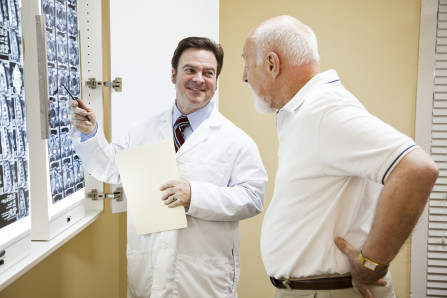
When patients are shown their x/rays they are often told two things:
Lets look at how ill-informed and misleading these statements are. The key thing to note here is that changes like that take at least 20 years to develop, and they’ve only happened in one spot: the left hand side of that abnormal joint.
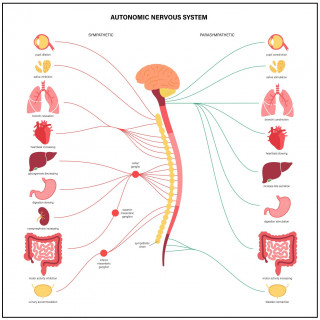
The last effect of stiffened joints I’ll look at is nerves. As I’ve shown you the nerves come out holes at the side. If there’s tilting of vertebrae that reduces the size of the hole. Also arthritic changes, swelling from inflamed joints, or ruptured discs can also reduce the space for the nerves.
Depending on how the nerves are affected they may cause extra signals (static) or reduced signals (blockage). It is well recognised that this can cause problems when it happens to the nerves that detect pain or control muscles.
However, the nervous system controls the things shown in this diagram as well, opening up a host of possible consequences of nerve interference.

Back about 100 years ago chiropractors noticed that sometimes seemingly unrelated conditions would improve when spines were adjusted. They started to claim that disease was caused by nerve interference, and by adjusting spines they were curing diseases. Nowadays all chiropractors understand that there are many possible causes of diseases. The overwhelming majority would not claim to be curing diseases, but would acknowledge that interference to the nervous system can cause the body to function abnormally. With this in mind, checking your spine for potential sources of nerve interference is just as sensible as checking for things such as blood pressure and cholesterol levels.
We've seen what dysfunctional joints (subluxations) can do. The reality with back problems though is that usually many issues happen concurrently, and while dysfunction can cause other problems, other problems can cause dysfunction (6). However, dysfunction (subluxations) need to be considered central for three very important reasons.
As a chiropractor for over 27 years every patient with back pain I saw had at least one and usually more of them.
As I’ve shown those stiffened and tilted joints can cause all those other problems. If you don’t remedy the joints you can’t fix the other problems, or they keep coming back.
Finally, and this is very important. Look what happens if you correct the stiffened tilted joints.
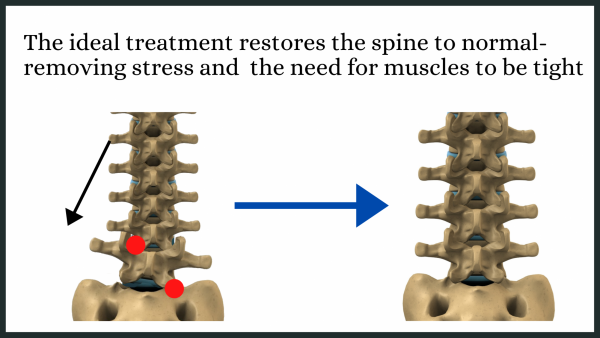

We’ve seen that the idea that your spine can be fixed by realigning or putting your vertebrae back in place is misleading and wrong. We’ve also seen that attempting to correct spinal dysfunction with exercises cannot work, and that most therapies alone just give temporary relief but don’t fix anything. In this section I will discuss how subluxations are properly corrected. You will need professional help, but I want you to choose the right professional with the right plan.
The way to restore movement to those stiffened joints is by using a force directly on that joint. Looking back at the underlying issue there are two major challenges.
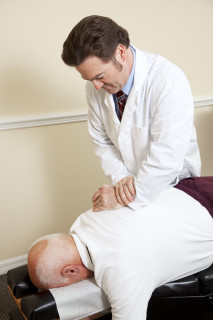
Given those challenges the force needs to be very accurately applied so that:
As you could imagine this takes a huge amount of training and skill. This is the core expertise of chiropractors who call these procedures adjustments. Other professional such as Osteopaths and therapists with special post graduate qualifications have expertise at this as well, and use slightly different terminology (7–10).
As well as needing to very specifically induce movement into the stiffened tilted joints, the muscles and soft tissues around them need to be restored. Looking at the basic dysfunction effect diagram shown earlier we can see that with the vertebrae tilting the space between the levers at the bottom of the stiffened joint has closed down on the right and opened up on the left. Over time the muscles and other tissues between these levers change in length to adapt. In order for the joint to go back to normal those muscles and tissues need to change back again. Of course its a bit more complicated because you’ve got things like muscles that have deteriorated due to being tight all the time, and others shortened, stiffened or weakened due to disuse, but I think you get the picture though. Things have to re-adapt over time. You can’t just go snap crackle pop and it’s all like new again.
As I’ve discussed, therapies such as massage, exercises or medications alone it will rarely fix anything. However, they can be an extremely important part of the process of restoring your spine.
As discussed in our article why do trigger points keep coming back muscles that have been tight for long periods of time develop changes that can cause pain, but more importantly inhibit function and can prevent it from returning to normal. Massage is excellent to help restore muscles.
We’ve seen that exercises alone will not restore normal spinal movement. However, as a result of the dysfunction, over time many muscles and other tissues will have shortened and weakened. These need exercise to restore. The way this is done is to gradually introduce exercises once chiropractic adjustments (or similar) have restored some movement.
If your spine is very inflamed rest and medication may be used temporarily to help settle it down in order to allow correction to begin.
If there is a catastrophic failure such as a ruptured disc is pressing hard on a nerve surgery may be needed. Too often though after surgery the underlying cause of the catastrophic failure is ignored.
To correct your spine you will need chiropractic adjustments (or similar) plus the coordinated use of other therapies such as massage and exercise. Like performing the adjustments (or similar), coordinating this process takes a great deal of training. Therefore the process needs to be managed by a professional such as a Chiropractor, Osteopath or a therapist with appropriate post graduate qualifications. That professional may do all those therapies him or herself, or refer some tasks to other appropriately qualified professionals.

That’s what I’ve done for over 27 years in practice: correct spines and manage their rehabilitation. I’d like to finish by sharing with you why we developed our massagers to help support this process.
For reasons I discuss in our article why do trigger points keep coming back patients usually need large amounts of massage or soft tissue therapy over a long period of time. If all done by professional therapists that can be very expensive. The consequence of that is patients rarely get enough. Our massagers allow patients to supplement their care with quality therapy at home. That way they can get all they need.
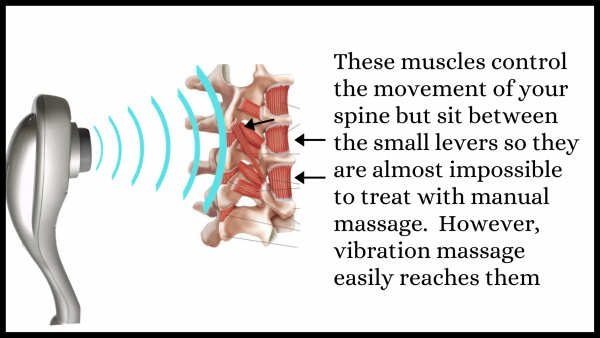
The usually overlooked issue is that, as this diagram shows, the really important muscles that control the movement of the individual vertebrae sit very deep between the levers. As well as being very deep those levers might only be 1cm apart. Because of that it’s physically impossible for a massage therapists to dig in deep enough to massage them.
Also, as discussed in our article Percussion vs vibration massage, percussion massagers such as massage guns attempt to massage by driving their heads in like jackhammers. There is no way they can jackhammer their heads in that far either. On the other hand the vibrations from a proper vibration massager penetrate deeply and can easily go between bones to get to tight spots that are otherwise impossible to reach. All you need to do is place the head of the massager beside the vertebrae directly over the muscles. For those clinicians who haven’t used a vibration massager like this before here are three very useful pieces of advice.
The first is by placing the head very specifically you can direct the vibrations to the muscles that need it. For example you can direct them at the muscles associated with the stiffened joints while avoiding the ones associated with compensating joints.
Secondly, those tight muscles can work against trying to restore movement, but if you use the vibration massager on them before hand it removes a lot of resistance.
Finally, with some movement restored the vibrations will further relax the muscles and help stimulate the circulation of nutrients. We’ve also got chiropractic adjusting instruments that apply repetitive thrusts into joints in order to “free them up”. Examples include Arthrostim and Impulse Chiropractic Adjusting Instruments. As well as having a much broader effect (including muscles) it is likely the vibration massager will further help restore movement as well.
In practice we find that when applying the massager post adjustment, pre and post checks of movement usually show an excellent increase in movement. Of course we have no way of knowing whether the increase was caused by the relaxation of the muscles around the spine, a similar effect to those chiropractic adjusting instruments, or both. We are just happy that the movement is a lot better.
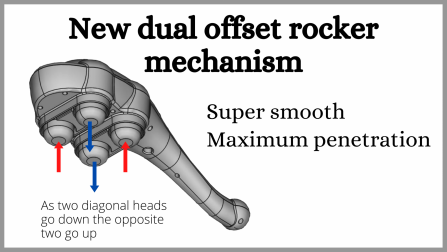
For how to choose an quality massager that will do a great job and that you will be extremely happy with please see our article How to choose a massager, or you can go straight and check out our economical, easy to use professional standard machines: the General Purpose Massager or our Ultimate Quad Head Massager.
DrGraeme massagers were originally built by Dr Graeme for use in his clinic, and to prescribe to his patients for additional self use at home. Now these are used by colleagues and other professionals for similar purposes. If you are a professional and wish to know more about this therapy, or possibly get a sample massager to trial please check out our practitioner page.
We are continually adding more information on research and uses. Subscribe below to have us email them to you "hot off the press".

Several years ago Dr Graeme, a Chiropractor practicing in Victoria, Australia was looking for a serious hand held massager his patients could use at home to get the extra quality massage they needed. The ones he found in the shops and on-line for home use looked nice but were not serious, and... read more
As practitioners we are continually dealing with dysfunctional musculoskeletal systems. Typically dysfunction develops and is perpetuated... Read Article
Do not refresh or leave this page until loading complete.